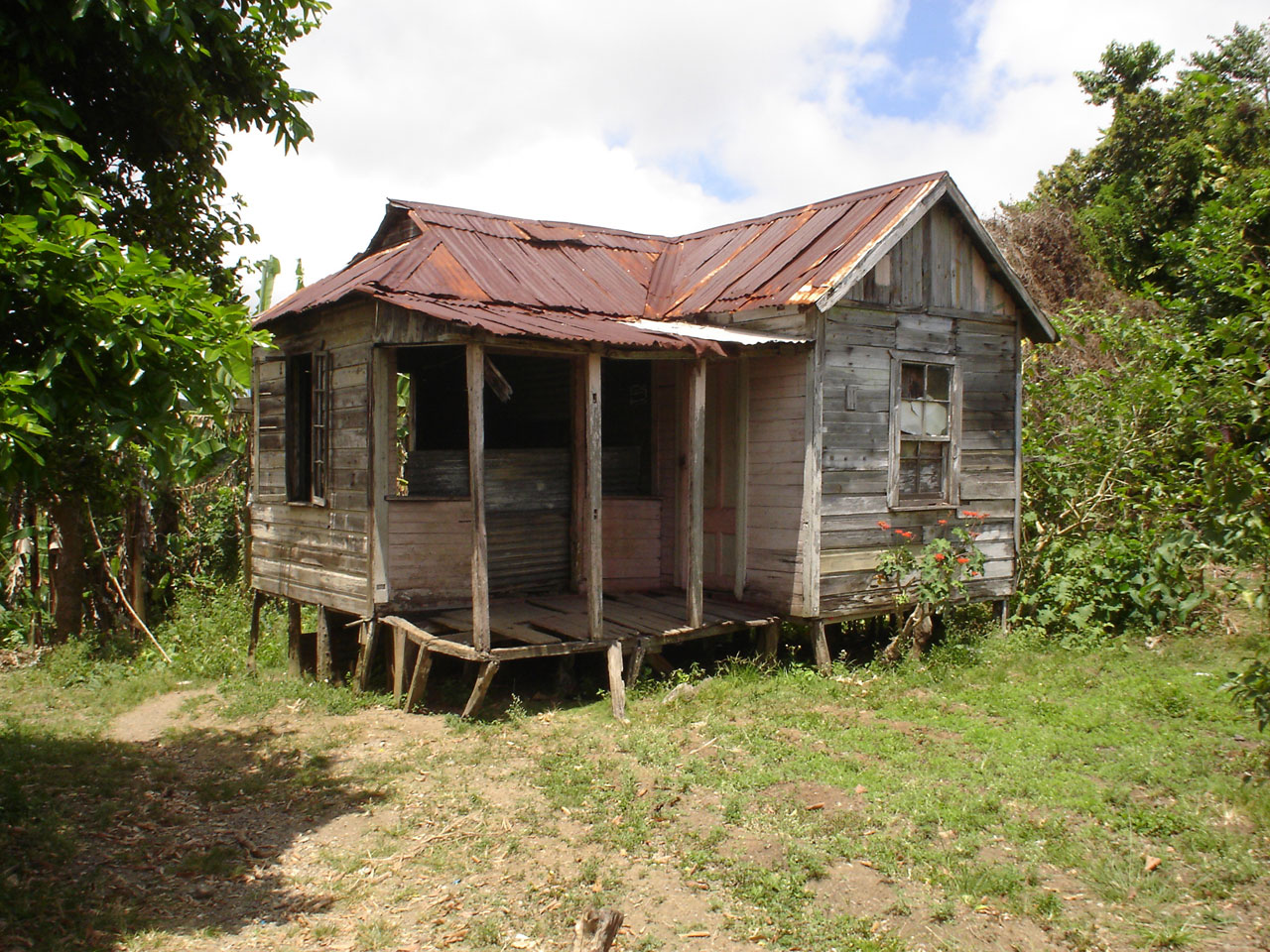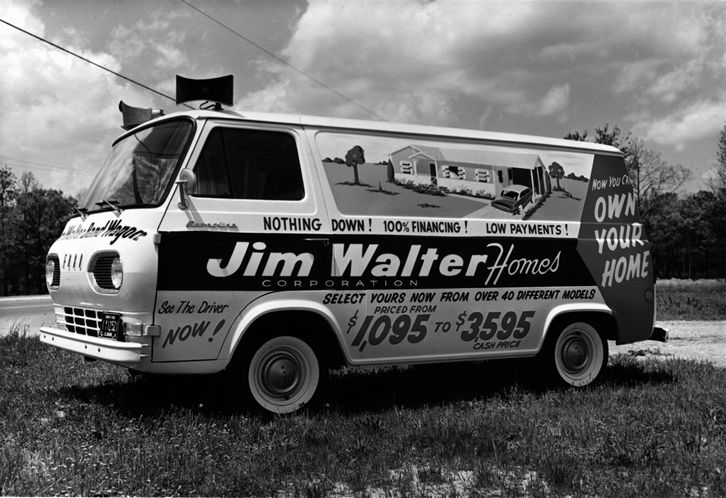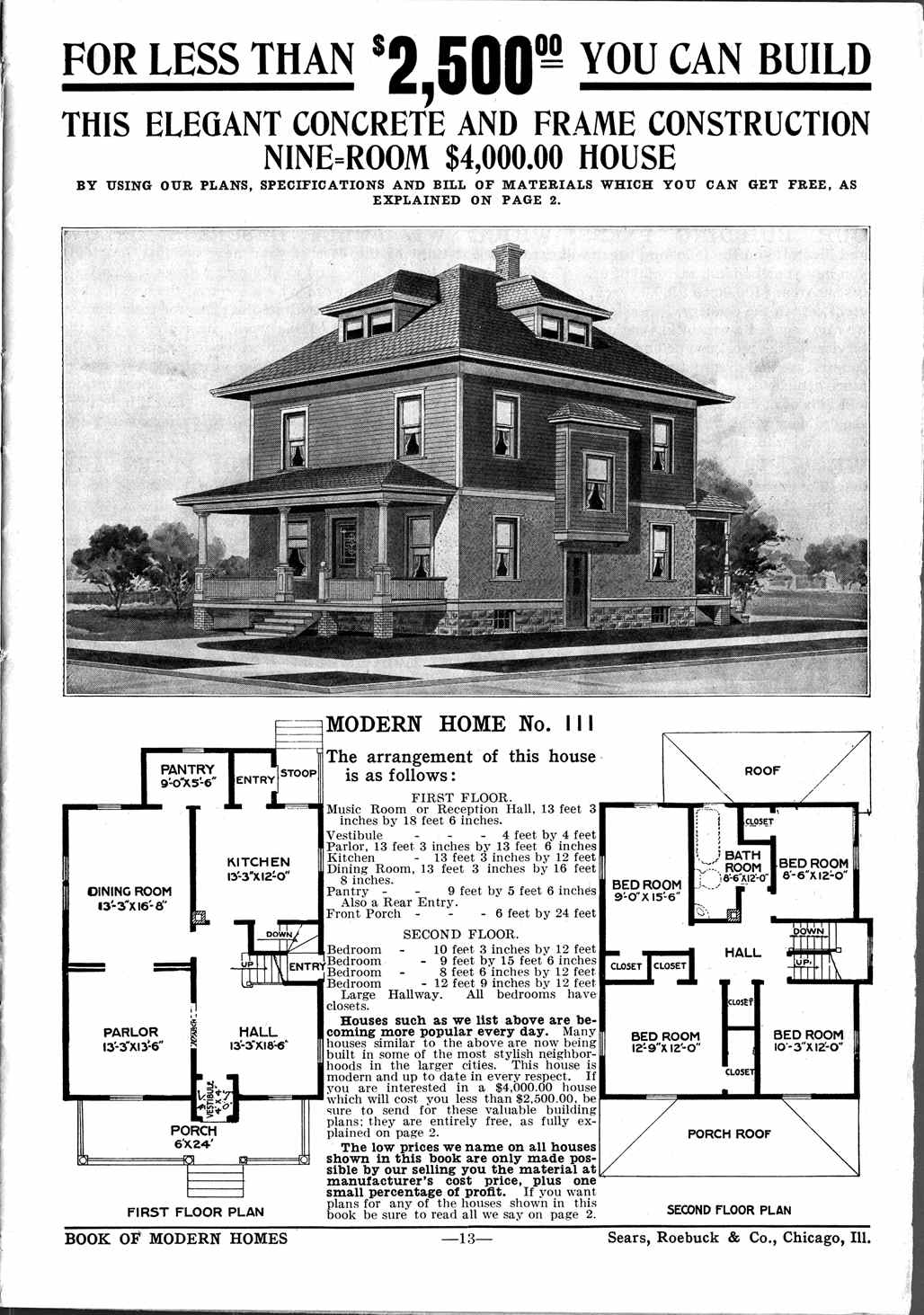Alabama Contributing Author, Dorothy Graham Gast, provides another interesting story about Shell Homes in Alabama. Do you remember them?
SHELL HOMES
by
Dorothy Gast
During the years after World War II, rural families in the South were still living in substandard housing. Many homes were no more than two-room shacks with lean-to areas that had served as tenant houses without running water or electricity. Many people had no hope of better conditions at the existing cost of building.
In the 1950s brochures began arriving in country mailboxes showing one, two, and three-bedroom homes completely finished on the outside, partially finished on the inside giving the buyer a choice of completing the work themselves. The best known of these was Jim Walter Homes.
 The company would sell most of the inside building material, including sheetrock, insulation, doors and carpet. Anyone who had a deed to an acre of land could sign a contract, make payments for twenty years and be debt free. A starter house with two bedrooms sold for $2400 and could be financed, finished, and added on to, and still be paid in full before the first child finished high school.
The company would sell most of the inside building material, including sheetrock, insulation, doors and carpet. Anyone who had a deed to an acre of land could sign a contract, make payments for twenty years and be debt free. A starter house with two bedrooms sold for $2400 and could be financed, finished, and added on to, and still be paid in full before the first child finished high school.
A lumber truck would drive up to the site, unload framing, doors, and windows, sheetrock, nails flooring, paint, and linoleum. Workers covered supplies with tarps and left. The next day or so a framing crew laid concrete blocks for foundations, built subflooring, and framed walls, while the new owners watched in amazement as the structure they had chosen developed before their eyes. The frame of an 800 square house could be ready for ceiling joists by the end of the first day. The oak floors were the last things finished by the company.
A drilling truck could drill a well and place a water pump into place and connect it to the house plumbing as the plumbing crew joined the pipes and as electricians wired the lights, base plugs, and laundry connections to the fuse box. Sometimes three different crews worked on varying tasks.
Our three-bedroom house was built by a Walter competitor. It was 34 by 22 feet with a living room kitchen at one end and tiny bedrooms around the even smaller bath. The girls’ bedroom was papered with state maps obtained free from service stations. They could lie in their bunk beds and trace trips on their travel wish lists.
The shell home division of Jim Walter Homes was closed in 2009. All over the South these homes still shelter families though most have been improved and changed enough to be unrecognizable. For some families, it was the first inkling that they could own their own home and aspire to a more comfortable life. Propane hot water heaters, stove and heating released the owner from the time-consuming wood cutting and fireplaces. Sixty years ago an acre of land, a Jim Walter home, and an affordable mortgage allowed even manual laborers the security of their own home with electricity and running water.
References:
- http://en.wikipedia.org/wiki/Jim_Walter_Homes#Jim_Walter_Home – Wikipedia says Jim Walter homes were “shell” homes, meaning the company would complete the outside so that the house was water tight, then allow the customer to finish the inside with their own labor. The company would also sell most of the inside materials, including sheetrock, insulation, doors and carpet to the customer and include them in the purchase. The result was very affordable mortgage payments, usually for 20 years. The only requirement from the company was that the customer must own the land on which the house was constructed. During the 1970’s and 1980’s, when mortgage rates went as high as 15%, Jim Walter offered 10% financing with no money down
- James W. Walter, Sr. (September 18, 1922 – January 6, 2000), of Tampa, Florida in the United States, was a home builder who started Jim Walter Homes and Walter Industries , now doing business as Walter Energy, Inc., a leading producer of metallurgical coal for the global steel industry, in 1946 with $1,000 he borrowed from his father. Walter eventually sold the company in 1986 for $2 billion to Kohlberg Kravis Roberts (KKR). Walter was the son of Ebe and Mabel Walter. The book Building a Business: The Jim Walter Story tells his story. His wife, Monica Walter, died in 1982, leaving two sons, James W. Walter Jr. Jim Walter Homes
WHERE DO I START? Hints and Tips for Beginning Genealogists with On-line resources
REVIEW
“This book was very informative and at a very modest price. One website I may have missed in your book that has been very helpful to me is genealogybank.com. I found articles about several of my ancestors in their newspaper archives. Thank you for your great newsletter and this book.”
“The book was clear & concise, with excellent information for beginners. As an experienced genealogist, I enjoyed the chapter with lists of interview questions. I’d recommend this book to those who are just beginning to work on their genealogies. For more experienced genealogists, it provides a nice refresher.”


